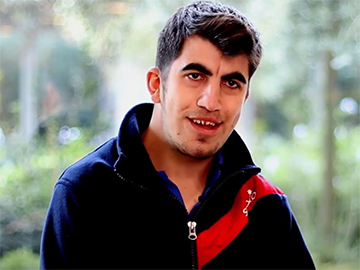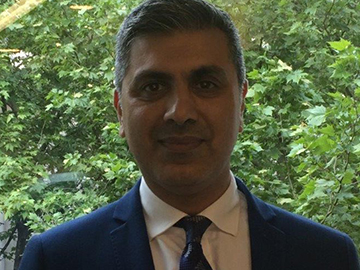In the midst of a biological crisis, thinking about fire escape can be the last thing on a company’s mind.
Medical equipment, staffing of critical workers, or facilities management concerns - like air filtration - rightly take top priority. But, as many hospitals urgently built COVID care centers in tents, unused sports arenas, and previously dark hospital wings… new considerations surfaced.
For example, these new patient rooms weren’t designed to handle heavy loads of oxygen from ventilators. What happens if a fire breaks out with such large quantities of fuel (oxygen) available? And how do we evacuate so many incapacitated people?
Sodexo’s multi-faceted and deeply skilled facilities management teams in the UK called on Mazin Daoud, Sodexo UK & Ireland’s Director of FM, to use his expertise in fire safety to write risk assessments for numerous COVID-19 field hospitals and wards across England and Wales.
Mazin explains:
“Initially I was approached to write a Standard Operating Procedure for fire safety risk assessments in COVID-19 field hospitals, but due to my knowledge of the risks posed by the oxygen supplied to all the ventilators, I was asked to assist the hospital at the ExCeL, London, and was then asked by the lead of healthcare fire safety in Wales to prepare the fire strategies for two new Nightingale field hospitals and two new COVID-19 wards (within an existing hospital).
While each had similarities, the main difference for each assessment was the level of dependency for the patient. Those recovering are more able to evacuate themselves, while with patients on ventilators, just the process of moving them in the event of a fire is potentially life threatening. The critical element to each plan was to provide different solutions to ensure patients had the maximum time to escape if a fire did develop.
Low ceiling buildings required using fire engineering to provide solutions such as automatic vents to exhaust the smoke and heat from a fire, while high ceiling buildings provide plenty of space for smoke and fire to travel vertically which reduces the risk of horizontal spread.”
Once his fire risk assessments were completed they were provided to the authorities, the NHS, and to the local fire service so that each body has a thorough understanding of the systems provided, the emergency procedures and plan.
Mazin adds:
“This is a very serious illness, which was really brought home to me when my uncle, who is only a few years older than me, died from COVID19. I feel the urgency every day and I have been impressed and fuelled by all of the people who have reacted in amazing fashion. Everyone working on these projects has worked ceaselessly, sometimes under very difficult conditions and to incredible timeframes, to complete them to a high standard.
I remember watching the Chinese build a hospital in two weeks and thinking ‘that’s amazing.’ We are doing equally amazing things, achieving things that we would have thought impossible only a few weeks ago.
In the midst of all of this, Sodexo has shown untold faith in me, letting me work on this without any questions or pre-conditions, just telling me to go and help as much as I can. This entire experience really has made me feel very humble.
These unprecedented times will be talked about for years, but as we sit in the present, I would really like to implore people to follow the governments’ advice to stay home and help the healthcare workers.”
Learn more about facilities management in the UK >



